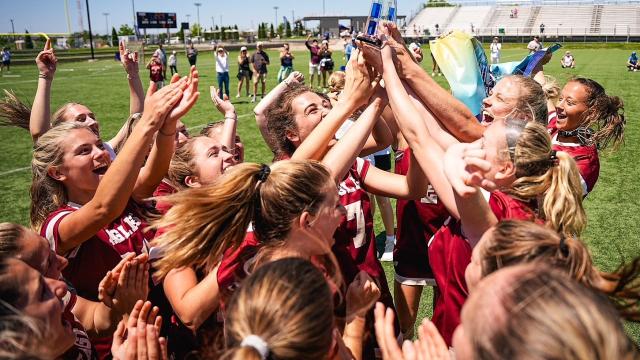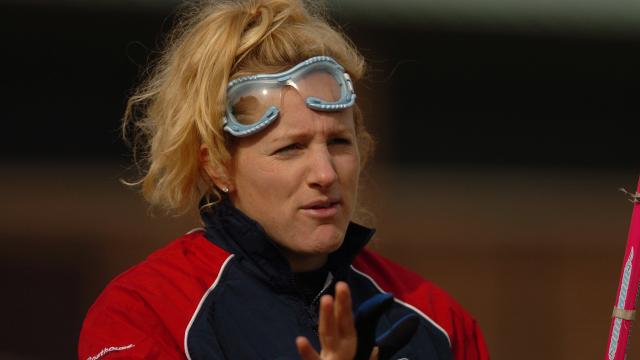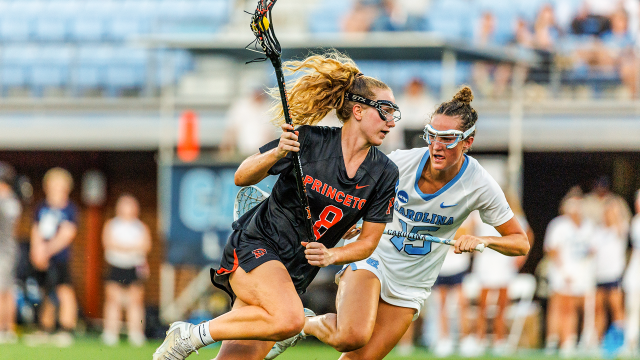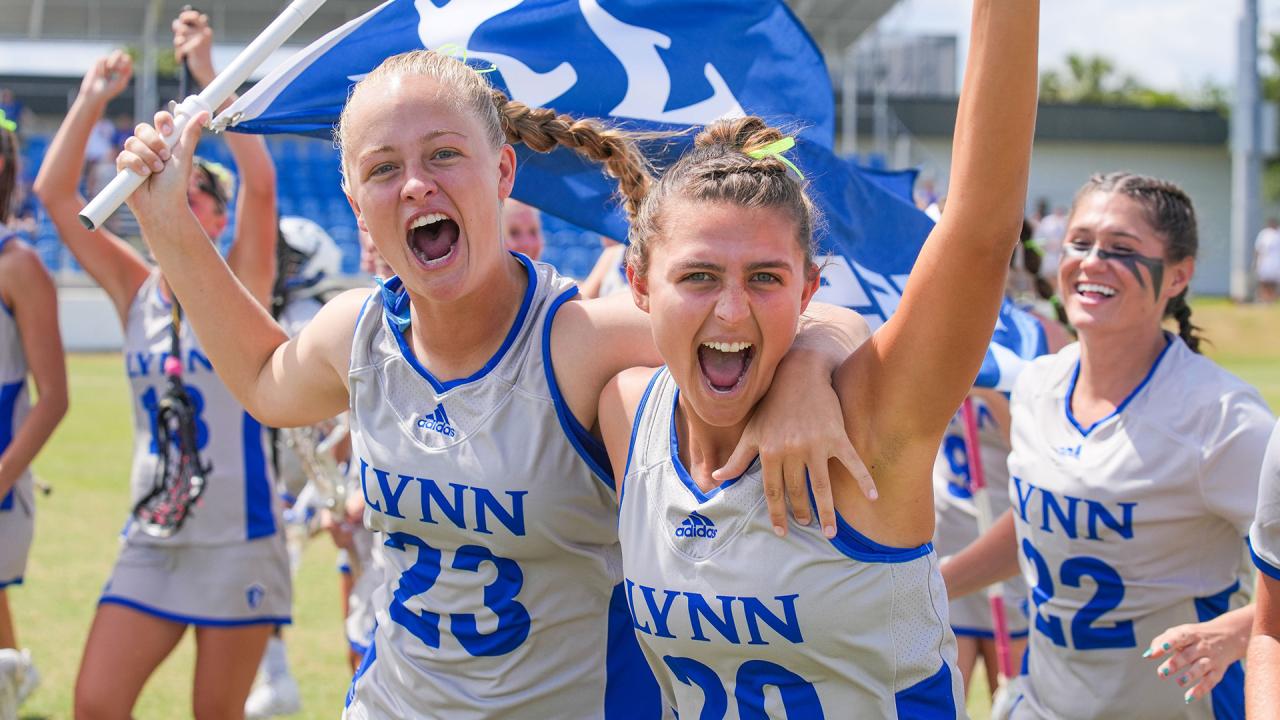
Sunshine Success for Division II Women's Teams in Florida
In 2018, Mindy Richmond saw the future.
Having spent most of her life in New York and Pennsylvania, she accepted the offer of serving as the first coach at Lynn University in Boca Raton, Fla., which was adding women’s lacrosse to its NCAA Division II lineup.
Richmond moved south after 10 seasons as the head coach at Indiana (Pa.), leading the Crimson Hawks to new heights while winning 105 games and becoming the winningest coach in program history.
“The biggest thing was seeing the success of the teams in Florida and how quickly they were able to build and find success,” Richmond said. “I knew that at the right school, I could build something really incredible.”
Now in her sixth season at Lynn, Richmond’s vision of the future has arrived.
The Fighting Knights have won 38 games over the past three years, earned their first NCAA tournament berth in 2024 and opened this season with 10 straight victories. After starting 13th in the USA Lacrosse Division II Women’s Preseason Top 20, Lynn has risen to No. 2, the program’s highest-ever ranking.
“The fact is that I knew I could potentially build a team here that could win a national championship,” Richmond said. “It's really been exciting to see this come full picture.”
But the same vision that brought Richmond to the Sunshine State is also shared by almost every other coach and school in her conference and across the state. There’s a Florida logjam these days at the top of the Division II women’s pecking order, with six Florida-based schools hovering around the top 10, including five members of the Sunshine State Conference.
The SSC’s ranked teams — Tampa, Florida Southern, Lynn, Embry-Riddle, Saint Leo and Rollins — along with Flagler from the Gulf South Conference, certainly flexed their cumulative muscle during the first half of the season. The seven teams combined for a near-perfect 49-1 record against out-of-state opponents through the end of March.
“The standard is Florida,” Flagler coach Grant Kelam said. “That’s very apparent now.”
Seton Hill, a Top 20 team from the Pennsylvania State Athletic Conference, lost to both Saint Leo and Lynn during its recent spring trip. Dina Cifelli is in her second year as Seton Hill’s head coach after spending the previous six years combined as an assistant at both Saint Leo and Tampa.
“I saw the change in the level of athletes coming to those schools when I was coaching down there,” she said. “In the last couple of years, the SSC has become as strong as any other conference out there. It’s really been booming. They’re getting players, and they have good coaches. And obviously, the weather is a bonus.”
For years, Florida Southern carried the banner for the state and for the South Region, winning the NCAA championship in 2016 and finishing as national runner-up in 2017 and 2018. Rollins also has two final four appearances and has qualified for the NCAA tournament seven times.
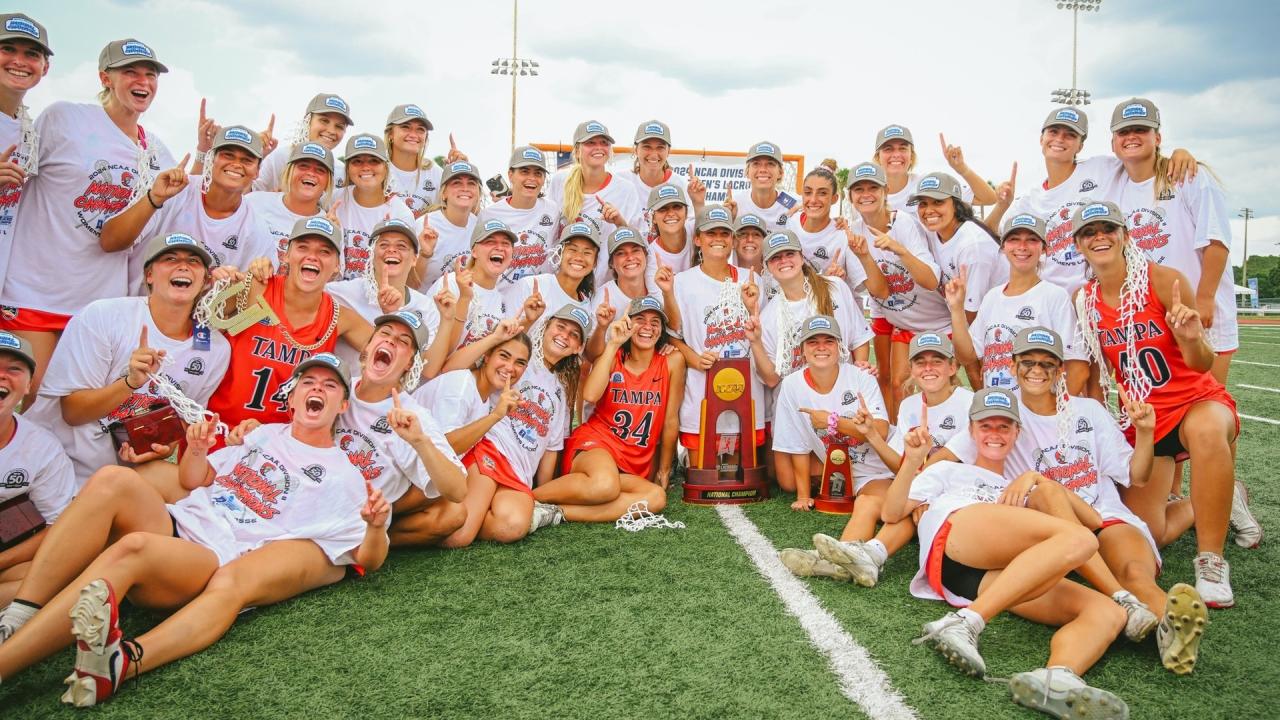
Last year, Tampa broke through and became the second Sunshine State Conference squad to win a national championship. The Spartans have continued their run this spring, occupying the No. 1 spot in all national polls for the first eight weeks before dropping this week after an overtime loss at Embry-Riddle.
With most of the non-conference play now completed, teams are moving predominantly into league competition for the second half. The heavyweight showdowns are underway.
“Every game is a big game in our conference and holds a lot of weight,” Richmond said. “I truly believe it’s the most fun and most competitive conference to play in, across the board, in all divisions.”
While the level of play in Florida high school lacrosse has made great progress in recent years, most of the state’s college teams are still filling their rosters with out-of-staters. All of the Top 20 teams are stocked with players from around the country.
“I do think that location is a big key. A lot of talented young high school girls want to get out of the cold of the Northeast, and this is a beautiful location,” Richmond said. “Up north, you’re watching players in college with medical gloves on their hands in the freezing cold. Down here, they can finish practice and be on a boat 30 minutes later.”
All the schools have players from the talent-rich Mid-Atlantic and Northeast, but the recruiting net for most of the state’s Top 20 programs extends far and wide. Recruits from as far away as California, Arizona, Colorado and Texas are also finding their way to Florida.
Flagler has the largest roster among the state’s teams with 55 players. Only six of those players are in-state recruits.
“Frankly, we’re competing against Division I mid-major programs for kids these days,” Kelam said. “That’s our sweet spot. We offer a very competitive lacrosse experience in warm weather with quality coaches at all of these schools.”
Players who don’t arrive as freshman often join as transfers, taking a second look at Florida’s varied Division II options after their first choices don’t pan out. Perhaps no coach has embraced the transfer portal more earnestly than Tampa’s Kelly Gallagher, who had a number of key transfers playing pivotal roles in last year’s championship run.
“Everyone wants that D-I offer, but it doesn’t always work out,” Gallagher said. “Some kids just need a second chance. They’re looking for an opportunity to contribute. They want to play, and they want to win.”
Tampa has 11 transfers on this year’s roster, including 10 who started their college careers at Division I schools. Most of the state’s other schools have five transfers or less.
Beyond the quality coaching, agreeable weather and talent pipeline that extends to all parts of the country, there’s also one other factor that coaches say helps support excellence.
“I believe the biggest difference maker here is that we don't have football in the Sunshine State Conference,” Richmond said. “A football program eats up a very, very large amount of an athletic budget. Without football, the other sports, including the women’s programs, are able to be financially supported better.”
Only two Division II schools in Florida — Edward Waters and West Florida — sponsor football teams, and neither of those schools have men’s or women’s lacrosse.
The center stage is available.
“Division II has always been kind of the redheaded stepchild,” Richmond said. “We don’t always get as much attention, but we have so many Division I level talented players. It’s really quite incredible.”
Paul Ohanian
Paul Ohanian has worked at USA Lacrosse since 2006 and is currently the senior manager of program content. Prior to joining USA Lacrosse, he served as SID at a Division III school with a strong lacrosse tradition and learned to appreciate the commitment and passion that athletes at all levels bring to the game.

Categories
Tags
Related Articles
